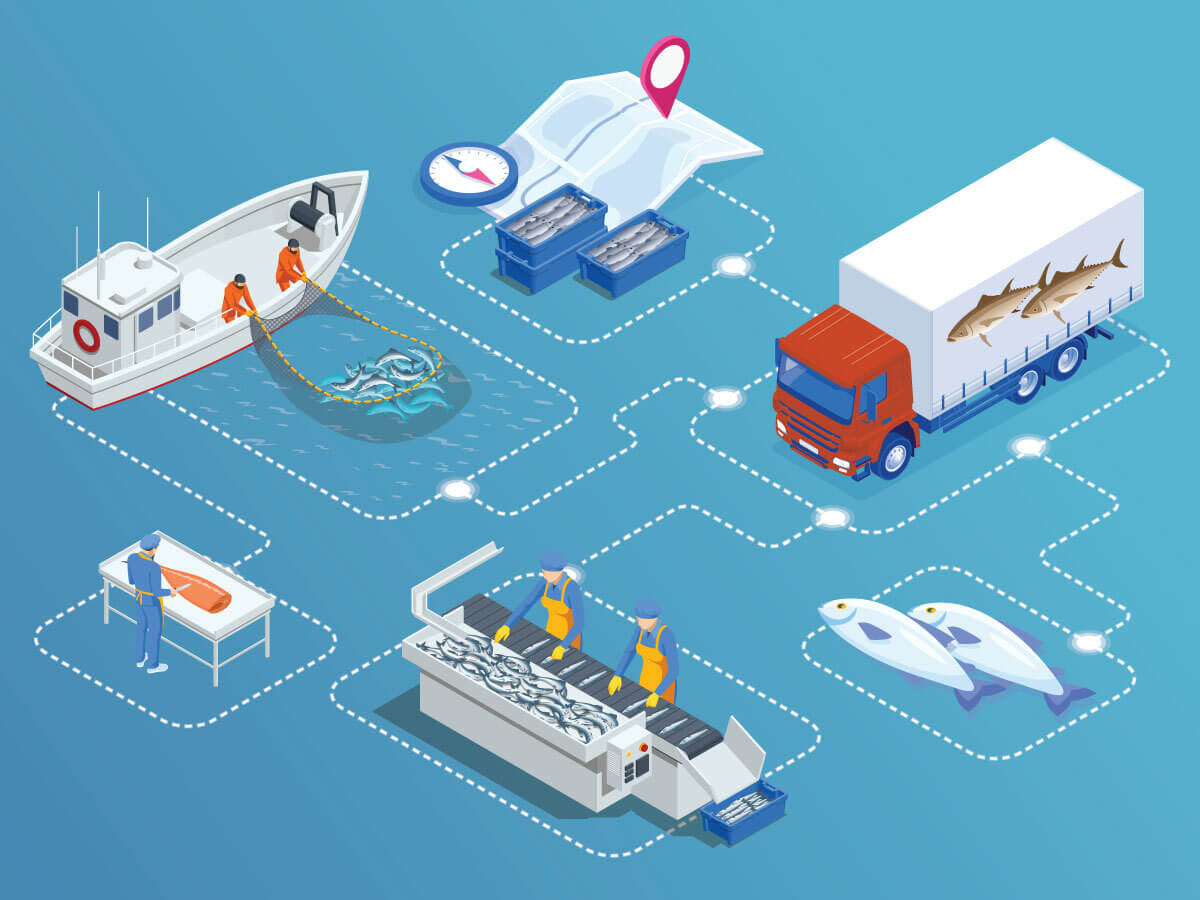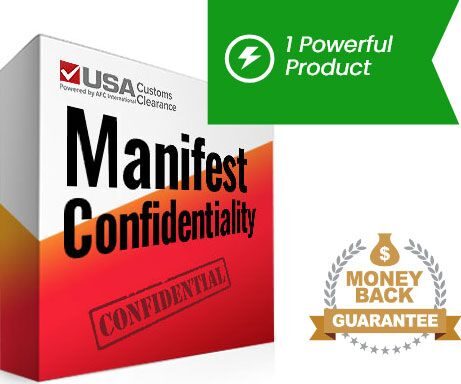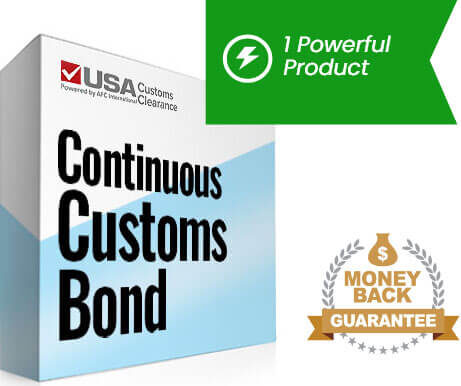
Seafood encompasses a variety of products that come from the world’s oceans. Whether it’s crab, shrimp, or tuna, there’s at least one type of sea creature that people enjoy. However, you’ll need to complete a variety of regulatory hurdles if you want to bring any of these products into the United States.
Key Takeaways:
Here, at USA Customs Clearance, government regulations are what make us tick. We’ll show you how to import seafood into the U.S. by outlining all the applicable requirements.
The Food and Drug Administration (FDA) has extensive regulations regarding the importation of seafood. Specifically, you’ll need to meet their facility registration requirements, send a Prior Notice, and follow their Imported Seafood Safety Program.
Facility registration is a standard practice for all food imports and applies to facilities that manufacture, process, pack, or hold food that’s meant for consumption in the United States.
Foreign and domestic operations are subject to this mandate as well. You can register by accessing the FDA Industry System (FIS). Next, you’ll need to pick the “FURLS Food Facility Registration Module (FFRM)” from the available systems on the Account Management Home Page.
After picking this from the list, you can begin registering. The process is split into different sections, each of which will require you to provide important information about your facility.
Once you’re finished, you’ll be taken to a page where you can review all the details you submitted. A message will notify you when your registration is successful. The FDA will also provide your registration number, PIN, and the expiration date.
A Prior Notice is also an essential part of importing seafood and other food products. Essentially, it lets the FDA know that a shipment of food will be entering the country.
FDA Prior Notices contains the following information:
The exact type of shipment will vary based on the type of seafood you’re importing. You can file your Prior Notice in one of two places.
CBP runs the ABI/ACE. You can submit your Prior Notice to the FDA through the platform thanks to the CBP’s modifications. If you’d prefer not to use this method, you can use the FDA’s PNSI instead.
The Imported Seafood Safety Program is the FDA’s method of ensuring all fish and fishery products that enter the country are safe for consumption. There are numerous parts of this program, but the one that most applies to importers is the Hazard Analysis and Critical Control Points (HACCP).
However, you’ll need to complete some preliminary tasks before you start working on HACCP requirements.
You’ll need a specialized team to carry out your HACCP plan. Each member should have knowledge on the type of seafood you’ll be importing. The team will then need to describe the food that will be imported and how it will be distributed.
The HACCP will then need to create a flow diagram explaining how the HACCP plan will be completed to verify its accuracy. With the preliminary steps completed, you can now move onto the seven HACCP principles.
This includes:
A hazard analysis outlined in Principle 1 is meant to identify and list dangers facing your seafood that could lead to injury and illness if not effectively controlled. The HACCP team will need to list these threats, determine their severity, and address the ones most likely to occur.
This includes:
Critical control points (CCP) defined in Principle 2 are any step that can be used to prevent, reduce, or outright eliminate hazards to your import of seafood. According to the FDA, there are numerous places where CCPs can occur.
Your HACCP team should carefully develop and document the CCPs that will be used to prevent hazards that are likely to occur. Critical limits are parameters that must be controlled by a CCP to a maximum and/or minimum value. There are three types of parameters.
Critical limits in Principle 3 are used to determine the safe and unsafe operating conditions of a CCP. Monitoring procedures in Principle 4 are the measurements and observations that are meant to assess if a CCP is being met or not. This principle serves three different purposes:
Even if the first four principles are executed flawlessly, CCP criteria might not be met. In instances like these, Principle 5’s corrective actions must be taken as a result. When taking these corrective actions, you’ll need to make sure they consist of three primary elements.
You should develop and have your corrective actions ready before the need for them arises. For Principle 6, you have to determine the validity of your HACCP plan. Individuals within your company, third party experts, and regulatory agencies can all assess its accuracy and validity.
Principle 7 will require you to develop records and documentation of your HACCP system. This must be thorough and provide various details about your seafood and the plan you implemented.
This includes:
With the assistance of a good HACCP plan, you can ensure your seafood imports will arrive safely.
For more on FDA regulations, read our complete guide to FDA customs clearance.

We work with you every step of the way to ensure a smooth and stress-free customs experience.
The National Marine Fisheries Service (NMFS) is another organization that heavily regulates the importation of seafood. They’re able to do this with their Seafood Import Monitoring Program (SIMP). There are 13 different seafood species groups regulated under SIMP.
The 13 seafood species groups SIMP applies to include:
There are 1,100 species that are included in these 13 groups. Regardless of which type of seafood you want to bring into the country, you’ll need to provide the NMFS with a few pieces of vital information about your goods.
This includes:
In the following sections, I’ll explain the information you’ll need to provide for these parts of your shipment.
The harvesting or producing entity is the vessel that caught your seafood. NMFS requires specific pieces of information about this ship.
You can use a variety of different documents to provide evidence of authorization to fish/farm. This can be done with a farm permit, registration, or certification.
The NMFS will need detailed information about the harvesting of your fish. This is to ensure your seafood was collected legally.
An ASFIS three-alpha code is used to identify different species of fish and other types of marine life and are assigned by FAO. If your seafood entries are made up of more than one harvesting event, you’ll need to provide the same information for each one that’s applicable.
To become an Importer Record with the NMFS, you’ll have to get your International Fisheries Trade Permit (IFTP). This can be obtained online by applying for the document through the National Permit System. You’ll receive an IFTP number if your application is successful. This number will be vital when importing seafood into the country.
As the Importer of Record, you’ll have to provide NMFS a considerable amount of information about yourself.
You’ll also be responsible for keeping records on the chain of custody for your seafood products.
On January 16th, 2025, the U.S. Government has agreed to ban seafood imports that don’t abide by their strict bycatch regulations. Bycatching is the unintentional capture of non-target species during commercial fishing operations.
Species the ban aims to protect include:
This ban, which takes effect on January 1, 2026, will help enforce the Marine Mammal Protection Act (MMPA). The MMPA imposes specific requirements that apply to U.S. importers and foreign exporters of seafood.
This includes:
Comparability findings determine if a foreign nation's fisheries must have a regulatory program for reducing marine mammal bycatch that is comparable in effectiveness to U.S. standards. Countries that don’t meet U.S. standards will be forbidding from exporting fish or fish products to U.S. buyers.
NOAA Fisheries maintains the LOFF, categorizing foreign fisheries as either "exempt" or "export" based on their interactions with marine mammals. Fisheries designated with “export” have higher levels of marine mammal bycatch and must meet more stringent requirements to receive a comparability finding.
In certain cases, specific fish or fish products from particular fisheries may require a Certification of Admissibility to enter the U.S. market. This certification verifies that the products were harvested in compliance with MMPA standards.
U.S. Fish and Wildlife Service (FWS) also has regulations on seafood. The FWS will want you to declare your seafood using a Declaration form (3-177). This can be completed online through the Environmental Declarations (edecs) website.
You can also print a physical copy of the document and mail it to a U.S. Fish and Wildlife Inspection Office. Declaration form 3-177 has different fields where you fill in all the relevant information you need.
The FWS requires imports to arrive through a Designated U.S. Fish and Wildlife Service Port. However, a Designated Port Exception Permit (DPEP) will help you get around this requirement.
The FWS will grant you this permit only for the following reasons:
Since seafood is perishable, you might be eligible for this permit if FWS believes it will reduce deterioration or loss of your cargo. You can download the PDF for this document and fill it out. After it’s been completed, you’ll only need to send it to a U.S. Fish and Wildlife Service Permit Office.
Provide the following information on the form:
DPEP applications have to pay a processing fee of $100 that you’ll need to pay when obtaining a new permit or when renewing it. To amend your permit, you’ll be charged $50.
Related: Importing Dairy Products to the U.S.
Customs and Border Protection (CBP) have a variety of regulations for imported shipments of seafood. An Executive Order (EO) established on December 22, 2023, forbids the entry of seafood that was made in the Russian Federation.
Seafood that was harvested in Russian Federation waters or by a Russian-flagged vessel is prohibited as well. The EO also applies if the seafood products have been transformed or incorporated into another product that has a different country of origin than the Russian Federation.
The EO requires importers to provide self-certification in the Document Image System (DIS), which is part of the Automated Commercial Environment. CBP will want you to provide the self-certification on an official company letterhead.
Only one is needed for each entry of goods into the country. If you’re importing shrimp for your seafood, then a DS-2031 should be submitted with your products. You’ll also need to include a CBP Invoice, which is also known as a commercial invoice. The document should have the FDA registration number and a detailed description of your seafood.
This includes clarifying if your products are:
You should also provide the scientific name of the seafood you’ve purchased.
Related: The Complete Guide To CBP Form 5106
Seafood is a perishable product, which means there might be tight time constraints on your products. To help overcome these challenges, you can take two steps to speed up the release of your goods.
The first is to submit CBP Form 3461. This document is used to speed up the release of your shipment and can be submitted to CBP electronically through ACE. The second step is to join the Voluntary Qualified Importer Program (VQIP) that’s available through the FDA.
It’s a fee based program that will expedite the review of your seafood. However, you’ll need to meet numerous requirements to enter.
This includes:
If you can meet these criteria, the only thing that will be left for you to do is to pay the user fee before October 1st, which will need to be repaid for each year you’re part of the program.

Protect 26 data points of your supply chain from being used against you. We'll provide you with the documentation you need to shield your business.
Seafood from specific countries and bodies of water are restricted from entering the country. As we’ve already established during our discussion on CBP regulations, seafood that comes from the Russian Federation is strictly prohibited.
The NMFS enforces restrictions on Mexican fisheries operating in the range of the Vaquita Refuge, which is located in the Upper Gulf of California. This area is meant to protect this endangered sea life.
Gillnet fishing is strictly forbidden in the Vaquita Refuge. Yet, numerous Mexican fisheries use this method of fishing to catch other types of fish in this body of water.
The restricted fisheries include:
Within the Vaquita Refuge is the Zero Tolerance Area where fishing operations of all types. Your seafood products must not come from this area either.
Related: Importing Food From Italy: A Ripe Opportunity
There are numerous countries that export quality seafood. To help narrow your search, I’ve given some data that shows the top five seafood exporters, as of 2020.

The EU is a great location to source seafood. While the U.S. and EU don’t share a Free Trade Agreement (FTA), both nations have excellent trade relations. There’s also a considerable amount of fish that’s exported from the EU each year.
China is known for its exports of tilapia and golden pomfret. Most of these fish were exported to the U.S. market in 2023. Norway is known for exporting a variety of different seafood as well.
This includes:
Vietnam is a popular supplier of the world's seafood. As recently as April 2024, their export revenue for these products reached a resounding $285 million. Chile is another country known for its quality seafood products. The U.S. is actually the leading destination for Chilean exports of this product. This shows the popularity of seafood from Chile is amongst Americans.
Related: Comprehensive Guide To Importing Meat
We realize how lengthy and difficult the import regulations for seafood can be to follow. That’s why at USA Customs Clearance, we’re committed to your importing success. Our team of Licensed Customs Brokers are ready to provide their immense amount of expertise. We also have an array of other services you can enjoy.
Don’t put your import of seafood off any longer. You can interact with USA Customs Clearance through the site or simply call our team for further assistance at (855) 912-0406.

This essential document is necessary for all shipments with a value greater than $2,500.
Get your bond from us!
 Copy URL to Clipboard
Copy URL to Clipboard
Add your first comment to this post